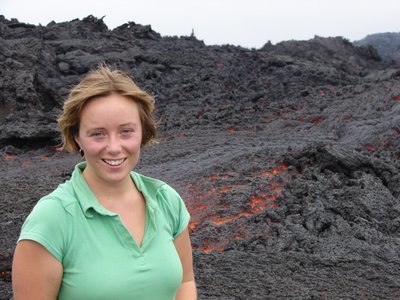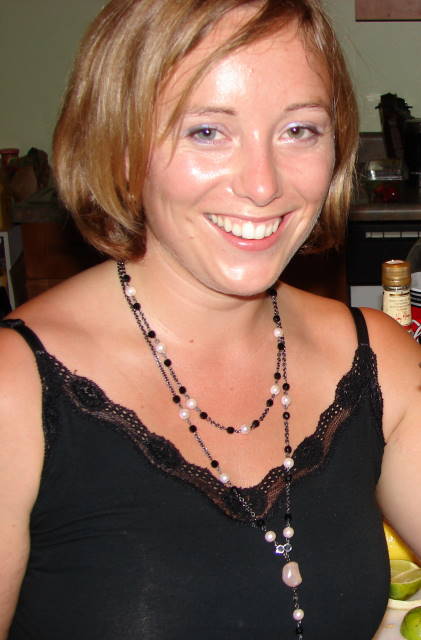My Weekend: Missing Buses, Live Volcano and Ruins
This weekend I had arranged to go to Copan in Honduras to see the famous Mayan ruins. The only method of transport in this country is the bus which can easily be arranged in the many travel agencies in town. Since many of the long journeys leave very early in the morning they come to your house or hotel. That is how I found myself learning my first lesson in Guatemalan efficiency while standing in the street from 3.40am on Saturday morning until 5.10 waiting for a bus. The bus never came and I went back to bed.
 With a weekend in Antigua ahead of me I decide to explore one of the nearby volcanoes, Pacaya. The hike up takes about an hour and a half and takes you past a lake in a colapsed cone and views of the surrounding volcanoes, including Agua which is beside Antigua.
With a weekend in Antigua ahead of me I decide to explore one of the nearby volcanoes, Pacaya. The hike up takes about an hour and a half and takes you past a lake in a colapsed cone and views of the surrounding volcanoes, including Agua which is beside Antigua.
Pacaya is still live and has a "Lava river" flowing from a fissure below the volcano cone. Treading carefully, we were able to walk on the lava which had solidified although I found that my feet got very warm even through the thick soles of my walking boots.
The lava is viscous and makes a wonderful crackling noise as it makes its way down the mountain. I have some incredible video footage of this but don't think I am able to post it here.

The air was incredibly hot, although I was at 2,600 metres with quite a strong wind, due to the constant stream of lava which is at 1300 degrees. Even the solidified parts are warmed by the lava beneath so that when I put down my pack for a moment to take this photo it was very warm when I retrieved it. The local wild dogs have found that the heat can provide a comfortably warm bed.
Later in the day I visited a local monastery which is now in ruins due to a huge earthquake in 1771 in which the city had to be abandoned. The ruins are open to all and grass and trees grow in the areas which used to be paved. Visitors are free to clamber over the walls and through the windows and local children like to write their names on what is left of the 18th century plaster. It is a wonderfully tranquil place to read a book or dig around for pieces of old pottery. One of the students from my language school found items from the 16th, 17th and 18th centuries which he dated from the exhibits in their museum.
 With a weekend in Antigua ahead of me I decide to explore one of the nearby volcanoes, Pacaya. The hike up takes about an hour and a half and takes you past a lake in a colapsed cone and views of the surrounding volcanoes, including Agua which is beside Antigua.
With a weekend in Antigua ahead of me I decide to explore one of the nearby volcanoes, Pacaya. The hike up takes about an hour and a half and takes you past a lake in a colapsed cone and views of the surrounding volcanoes, including Agua which is beside Antigua.Pacaya is still live and has a "Lava river" flowing from a fissure below the volcano cone. Treading carefully, we were able to walk on the lava which had solidified although I found that my feet got very warm even through the thick soles of my walking boots.
The lava is viscous and makes a wonderful crackling noise as it makes its way down the mountain. I have some incredible video footage of this but don't think I am able to post it here.

The air was incredibly hot, although I was at 2,600 metres with quite a strong wind, due to the constant stream of lava which is at 1300 degrees. Even the solidified parts are warmed by the lava beneath so that when I put down my pack for a moment to take this photo it was very warm when I retrieved it. The local wild dogs have found that the heat can provide a comfortably warm bed.
Later in the day I visited a local monastery which is now in ruins due to a huge earthquake in 1771 in which the city had to be abandoned. The ruins are open to all and grass and trees grow in the areas which used to be paved. Visitors are free to clamber over the walls and through the windows and local children like to write their names on what is left of the 18th century plaster. It is a wonderfully tranquil place to read a book or dig around for pieces of old pottery. One of the students from my language school found items from the 16th, 17th and 18th centuries which he dated from the exhibits in their museum.


0 Comments:
Post a Comment
<< Home